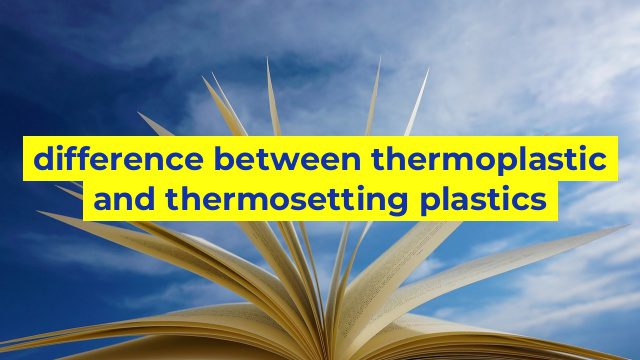The Fundamental Difference between Thermoplastic and Thermosetting Plastics
Introduction
Plastics are widely used in the manufacturing industry today to produce a broad range of products. These products include toys, packaging material, automobile parts, electrical switches, and many others. The plastics used in these products can be broadly classified into two categories; thermoplastic and thermosetting plastics.
Definition of Thermoplastic and Thermosetting Plastics
Thermoplastics are plastics that can be melted and reshaped multiple times upon the application of heat. Thermosetting plastics are plastics that harden permanently after their first heating.
Chemical Structure
Thermoplastic polymers have linear or branched chain structures, and molecules are held together by weak Van der Waals forces, hydrogen bonds, or dipole-dipole forces. On the other hand, thermosetting polymers have tightly interconnected molecular structures, which are not easily broken apart by heat.
Physical Properties
Thermoplastics possess relatively lower density, low strength, and flexibility, while thermosetting plastics have a high density, high strength, and brittleness.
Usage
Thermoplastics are used in the manufacturing of products that require high flexibility and moldability. Such products include bottles, pipes, containers, and toys. On the other hand, thermosetting plastics are used in making products that require high heat resistance, durability, and strength. These products may include electrical insulators, brake pads, and automotive parts.
Recyclability
Thermoplastic is a recyclable plastic, which can be melted and reshaped again, while thermosetting plastics are not recyclable, and their components cannot be separated from each other.
Conclusion
In conclusion, while thermoplastic and thermosetting plastics have some similarities, they both possess different chemical structures, physical properties, and applications. Understanding these differences can significantly aid manufacturers in selecting the best plastic material for their product manufacturing.
Table difference between thermoplastic and thermosetting plastics
| Property | Thermoplastic | Thermosetting Plastic |
|---|---|---|
| Melting point | Low | High |
| Reaction to heat | Can be melted and remolded | Does not melt, becomes hard and brittle |
| Chemical properties | Less resistant to chemicals | More resistant to chemicals |
| Strength | Less strong, flexible | Strong, rigid, brittle |
| Uses | Disposable products, packaging, toys, etc. | Electrical insulation, automobile parts, construction materials, etc. |

